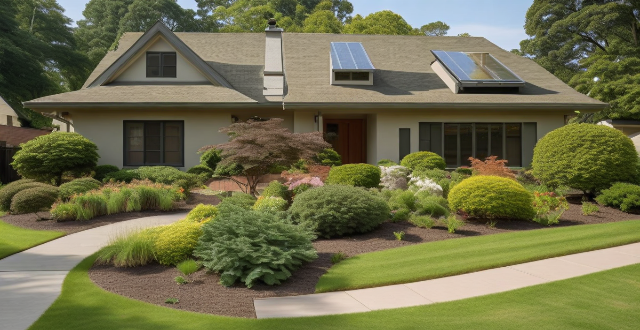Meeting building energy efficiency standards is crucial for reducing energy consumption and promoting sustainability, but it comes with certain costs that both homeowners and builders need to consider. The initial investment includes design and planning fees, high-performance windows and doors, insulation, energy-efficient appliances, skilled tradespeople, and additional time. Ongoing maintenance and operation costs include utility bills, potential tax credits and rebates, regular inspections, repairs, and replacements. Despite the costs, meeting these standards offers benefits such as reduced carbon footprint, improved air quality, health and comfort, lower utility bills, and increased property value.

The Cost of Meeting Building Energy Efficiency Standards for Homeowners and Builders
Meeting building energy efficiency standards is a crucial step towards reducing energy consumption and promoting sustainability. However, it comes with certain costs that both homeowners and builders need to consider. In this article, we will discuss the various factors that contribute to the cost of meeting these standards and how they can be managed effectively.
Initial Investment
The initial investment required to meet building energy efficiency standards varies depending on several factors, including the size of the building, its location, and the specific standards being implemented. Here are some key elements that contribute to the initial investment:
Design and Planning
- Professional Fees: Hiring an architect or engineer who specializes in energy-efficient design can add to the overall cost.
- Permits and Approvals: Obtaining necessary permits and approvals from local authorities may involve additional expenses.
Construction Materials
- High-Performance Windows and Doors: Energy-efficient windows and doors are typically more expensive than conventional ones.
- Insulation: Adding extra insulation to walls, floors, and ceilings can increase material costs.
- Energy-Efficient Appliances: Upgrading to energy-efficient appliances such as HVAC systems, water heaters, and lighting fixtures can be costly.
Installation and Labor
- Skilled Tradespeople: Hiring experienced professionals to install energy-efficient systems and materials can result in higher labor costs.
- Additional Time: Some energy-efficient measures may take longer to install, leading to increased labor costs.
Ongoing Maintenance and Operation Costs
Once the building is constructed according to energy efficiency standards, there are ongoing maintenance and operation costs that homeowners and builders need to consider:
Utility Bills
- Reduced Energy Consumption: While the initial investment may be higher, energy-efficient buildings generally have lower utility bills due to reduced energy consumption.
- Potential for Tax Credits and Rebates: Some governments offer tax credits or rebates for homes that meet certain energy efficiency standards, which can help offset ongoing costs.
Maintenance and Repairs
- Regular Inspections: Energy-efficient buildings require regular inspections to ensure that all systems are functioning properly and efficiently.
- Repairs and Replacements: High-performance components may need repairs or replacements over time, which can add to maintenance costs.
Benefits of Meeting Building Energy Efficiency Standards
Despite the costs associated with meeting building energy efficiency standards, there are several benefits that make it worthwhile for homeowners and builders:
Environmental Impact
- Reduced Carbon Footprint: Energy-efficient buildings contribute to a smaller carbon footprint by using less energy and resources.
- Improved Air Quality: By reducing energy consumption, air quality can be improved both inside and outside the building.
Health and Comfort
- Improved Indoor Air Quality: Proper ventilation and filtration systems in energy-efficient buildings can lead to better indoor air quality.
- Thermal Comfort: Advanced insulation and climate control systems provide greater thermal comfort for occupants.
Long-Term Savings
- Lower Utility Bills: Over time, the reduced energy consumption of an energy-efficient building leads to significant savings on utility bills.
- Increased Property Value: Homes that meet energy efficiency standards often have higher property values due to their potential for long-term savings and environmental benefits.
In conclusion, while there are initial costs associated with meeting building energy efficiency standards, these costs can be managed through careful planning and budgeting. Additionally, the long-term benefits of reduced energy consumption, improved environmental impact, and increased property value make it a worthwhile investment for homeowners and builders alike.